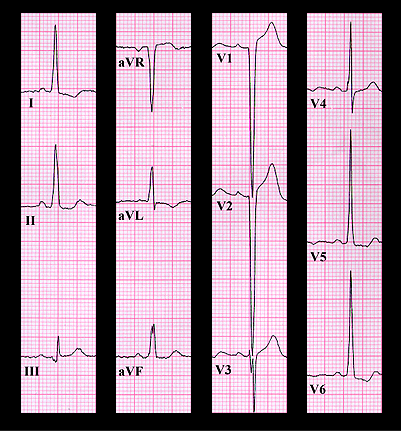
The ECG, shown again here, is a classic example of left ventricular hypertrophy with deep S waves in leads V1 and V2, tall R waves on leads V5 and V6, prolongation of the QRS duration and depression of the ST segment. The murmurs are those of aortic stenosis and insufficiency and the presence of left ventricular hypertrophy suggests that the lesions are severe. Indeed, a systolic gradient of 100 mm Hg was demonstrated across her aortic valve and there was significant aortic insufficiency.
